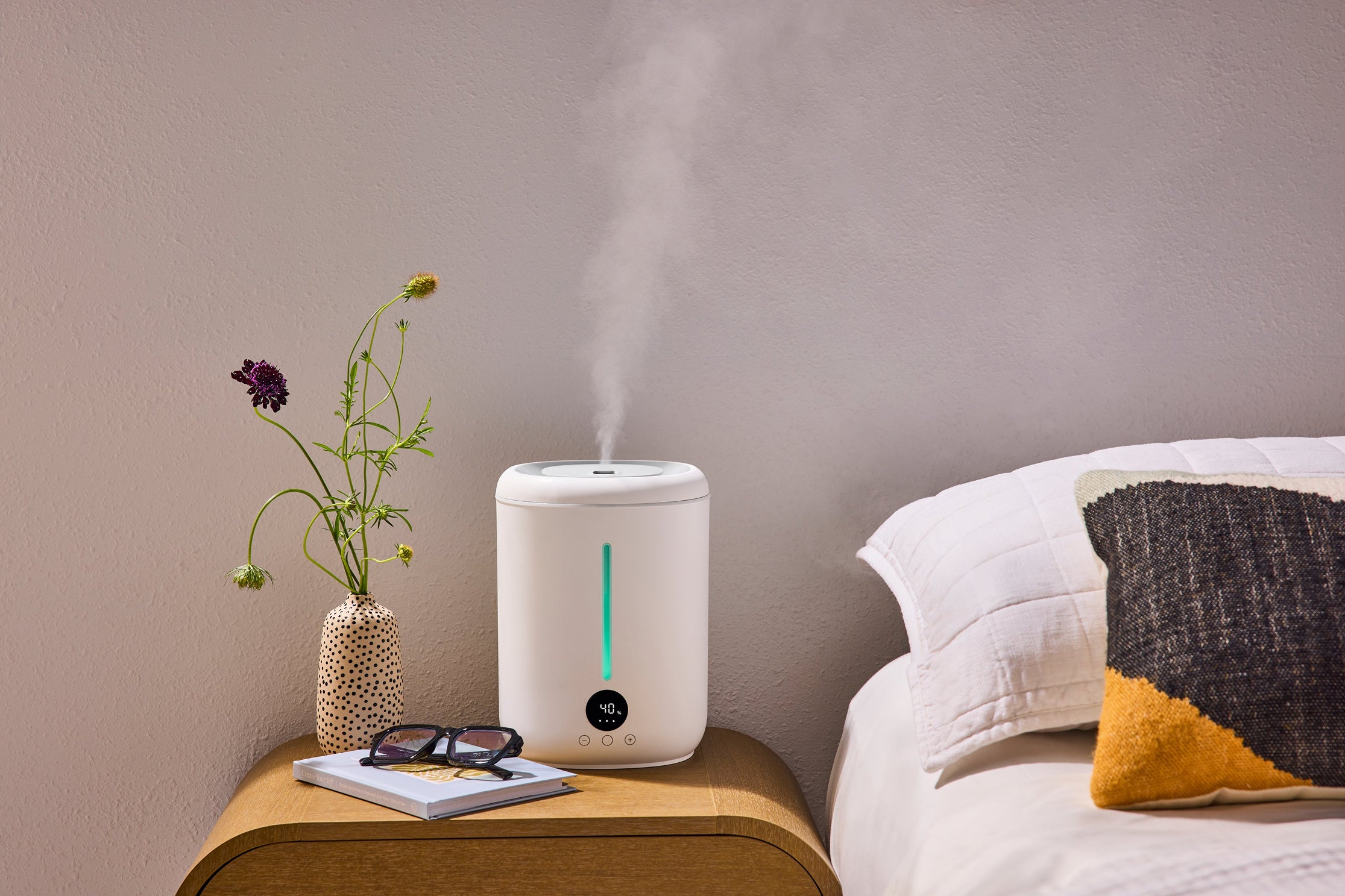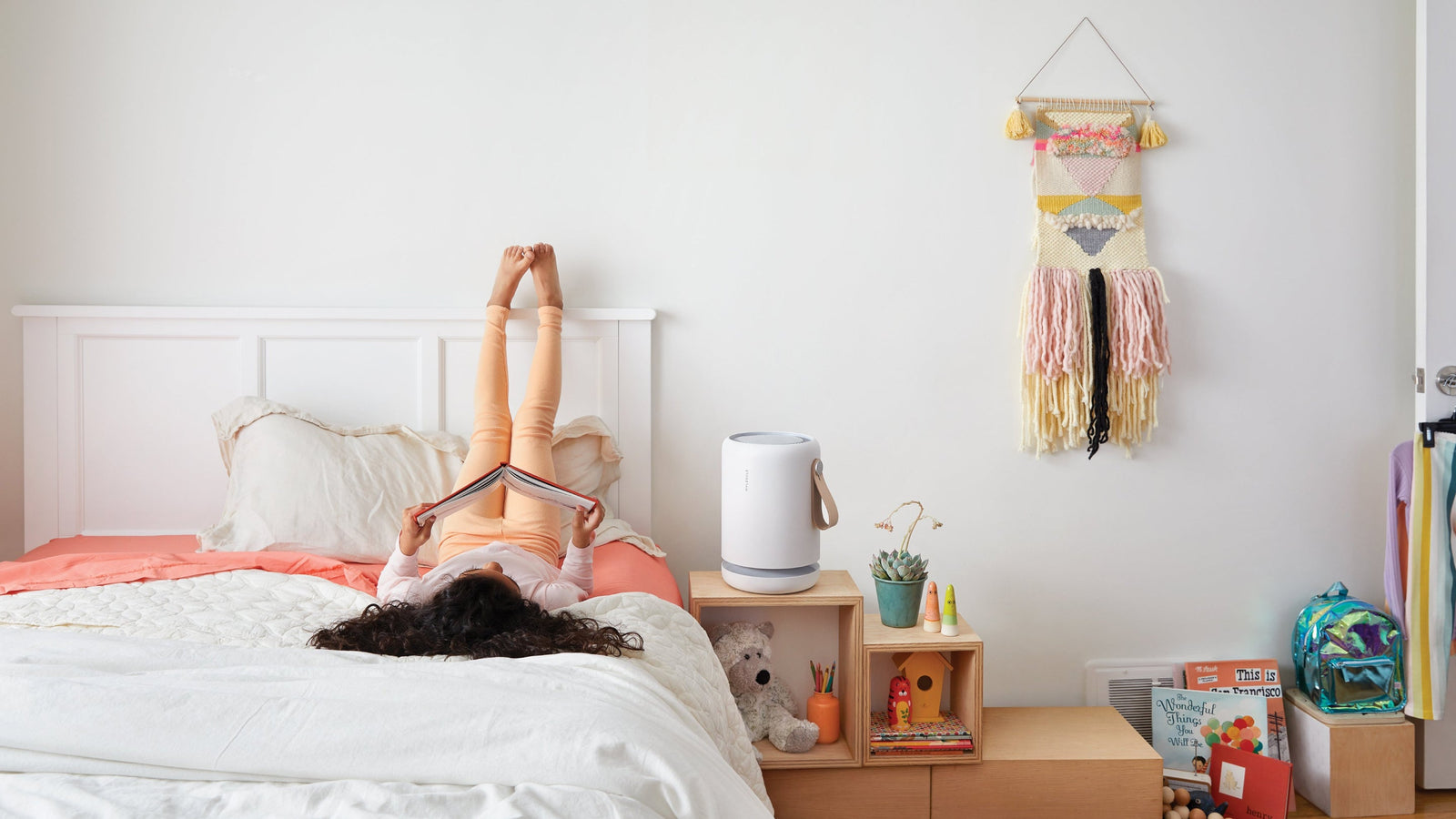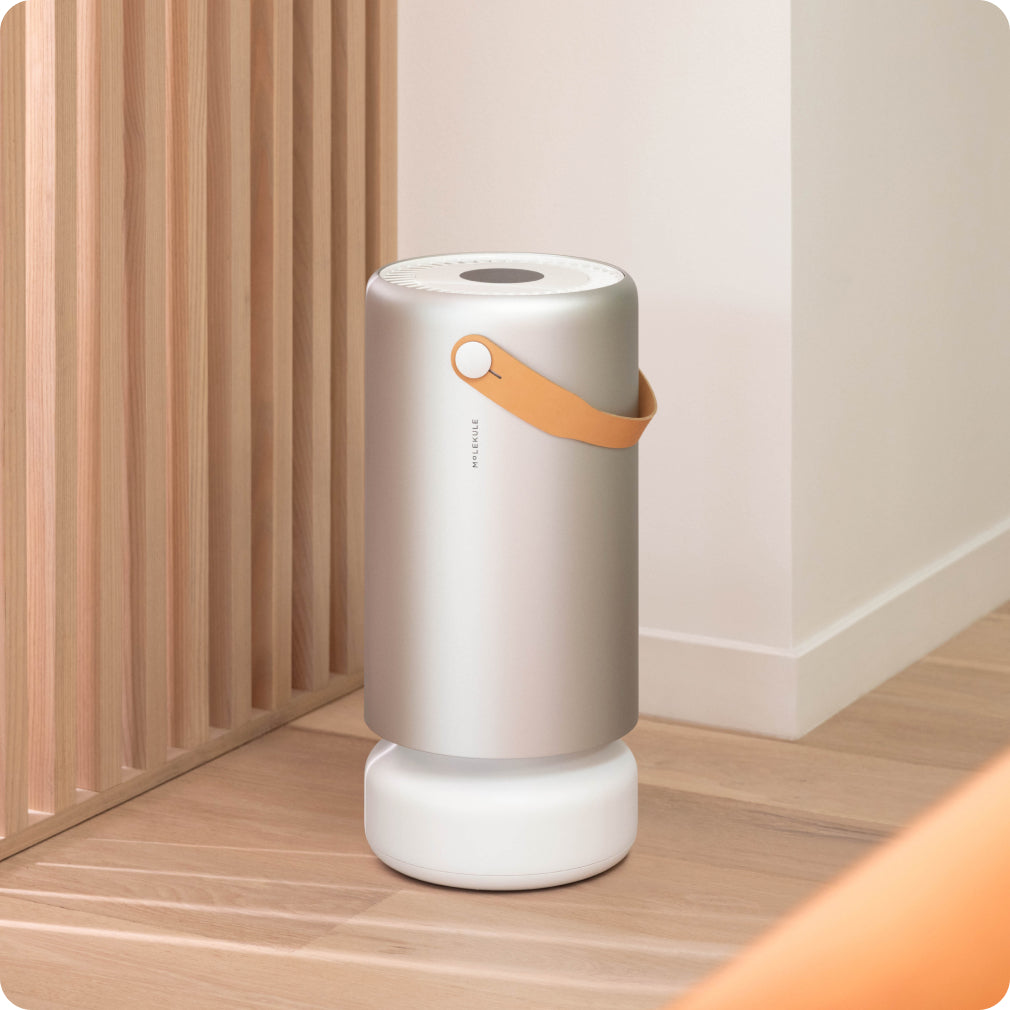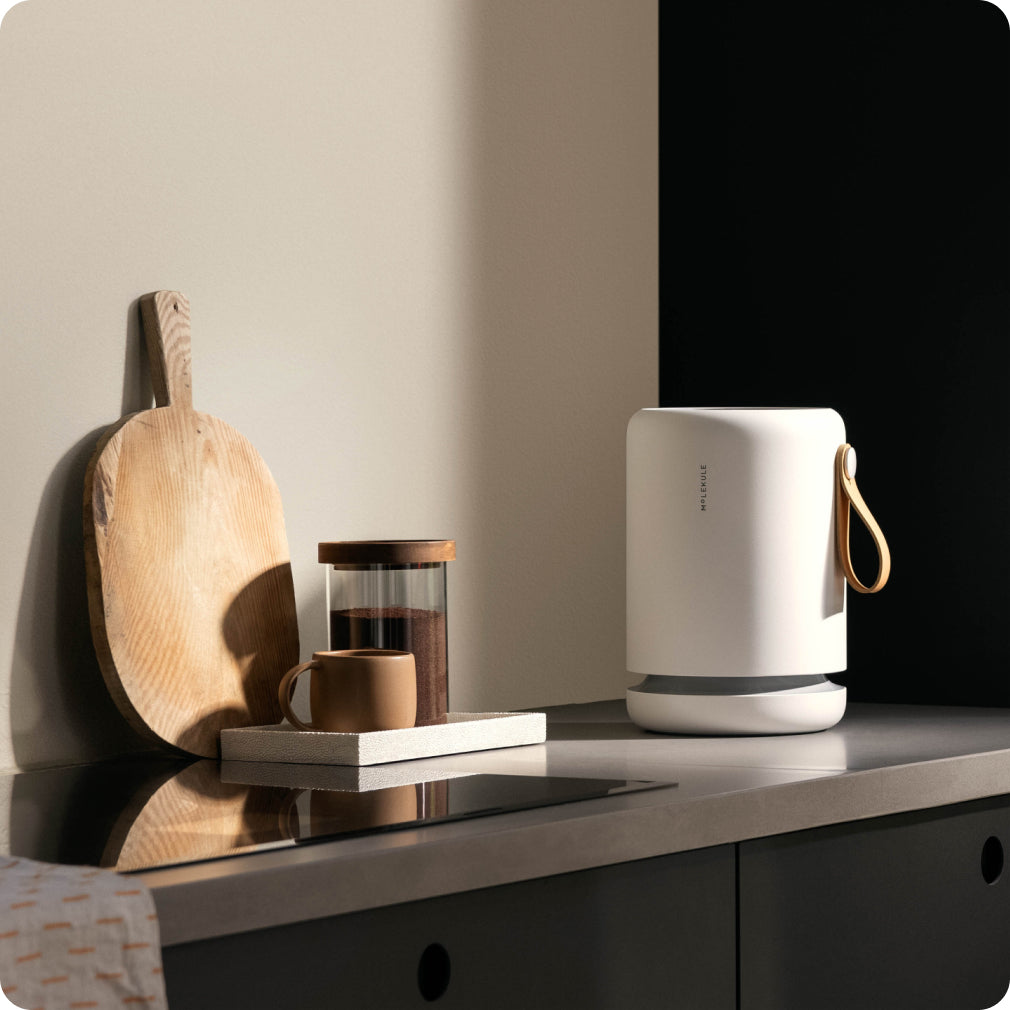Mindfulness techniques are proven to calm the mind and improve sleep by easing stress and quieting the racing thoughts that keep you awake. Research from Harvard shows participants in mindfulness programs experienced less insomnia, fatigue, and depression, while a meta-analysis of 18 trials confirms lasting improvements in sleep quality.
The most effective approach blends simple practices, like body scan meditation, breathing exercises, and muscle relaxation, with supportive tools such as air purifiers for sleep, which create a cleaner, calmer environment for deep rest.
Key Takeaways
-
Proven Effectiveness: Meta-analysis confirms significant improvements in sleep quality.
-
Multiple Techniques: Body scan, 4-7-8 breathing, and muscle relaxation target different aspects of rest.
-
Timing Matters: 15–20 minutes before bed, starting small for beginners.
-
Environmental Support: Understanding air purifier benefits enhances outcomes.
-
Lasting Benefits: Regular practice supports long-term sleep and stress resilience.
Understanding the Science Behind Mindfulness and Sleep
Mindfulness meditation trains present-moment awareness in a non-judgmental way, reducing rumination, emotional reactivity, and stress responses that disturb sleep. The practice evokes the “relaxation response,” a measurable physiological shift shown to ease depression, pain, high blood pressure, and insomnia.
Neurological Mechanisms of Mindfulness for Sleep
Studies reveal mindfulness reshapes sleep-related brain regions, explaining why benefits persist for months. One study found participants practicing body scan meditation for eight weeks had reduced cortisol levels, the stress hormone linked to disrupted sleep cycles.
11 Evidence-Based Mindfulness Techniques for Sleep Enhancement
There are many ways to bring mindfulness into your bedtime routine, but some practices are especially well-studied for improving sleep. Below are evidence-based techniques that target both the mind and body, helping you relax more deeply and prepare for restful nights.
1. Body Scan Meditation
This practice guides your attention through each part of the body, usually starting with the toes and moving up to the head. By noticing sensations without judgment, such as warmth, tingling, or tightness, you become more aware of hidden tension and allow it to release naturally. Studies show body scan meditation can improve sleep quality and mood in groups ranging from adolescents with insomnia to older adults, even enhancing calmness in patients facing serious illness.
2. 4-7-8 Breathing Technique
Rooted in ancient pranayama, this method involves inhaling for 4 counts, holding for 7, and exhaling for 8. The extended exhale activates the body’s relaxation response, slowing heart rate and lowering stress hormones. Over time, regular practice has been shown to improve heart rate variability, support melatonin production, and ease anxiety before bed. Beginners can start with just four cycles, then gradually build to eight as it becomes more comfortable.
3. Progressive Muscle Relaxation
Progressive muscle relaxation (PMR) involves tensing and releasing different muscle groups in sequence, from your feet up to your face. This contrast teaches your body the difference between tension and relaxation, making it easier to let go of stress at night. Pairing PMR with mindful breathing amplifies the effect, and understanding natural congestion relief can further support respiratory comfort.
4. Mindful Breathing for Present-Moment Awareness
At its core, mindful breathing means paying close attention to the natural rhythm of each inhale and exhale. It’s simple, yet powerful—this practice calms mental chatter and anchors you in the present moment, which is especially helpful if you struggle with racing thoughts. Each time your mind wanders, gently redirecting it back to your breath builds resilience against distraction and helps create the conditions for restful sleep.
5. Guided Sleep Meditation
Guided meditations provide structured support, often using a calming voice to lead you through visualizations, body awareness, or gentle breathing exercises. These recordings are particularly helpful for beginners who may find it hard to stay focused on their own. With regular use, they create a reliable wind-down ritual that signals your mind and body it’s time to sleep, reducing the impact of stress or overthinking at bedtime.
6. Loving-Kindness Meditation
This form of meditation centers on repeating phrases of goodwill, first to yourself, then to loved ones, acquaintances, and even difficult people. Phrases like “May I be peaceful” or “May you be free from suffering” foster compassion and reduce negative self-talk. Research shows loving-kindness meditation lowers anxiety, improves self-reassurance, and can ease emotional tension that often keeps people awake at night.
7. Box Breathing
Also called square breathing, this technique uses equal timing. Inhale for 4, hold for 4, exhale for 4, hold empty for 4. The steady rhythm creates balance in the nervous system while the counting provides a gentle mental anchor. Box breathing is especially effective if your mind tends to wander at bedtime, since it combines both focus and relaxation in one simple exercise.
8. Visualization
Visualization involves creating calming mental imagery, such as walking on a beach, sitting by a fire, or lying in a meadow. Engaging all five senses (sight, sound, touch, smell, and taste) deepens the immersive effect and signals safety to the brain. When paired with slow breathing, guided imagery helps shift focus away from stress and into a peaceful state that naturally encourages sleep.
9. Yoga Nidra
Sometimes called “yogic sleep,” yoga nidra is a guided practice that takes you to the edge between wakefulness and sleep. It often combines body scanning, breathing awareness, and visualization to create profound relaxation without fully losing consciousness. Practicing yoga nidra before bed can prepare both mind and body for sleep, making it easier to drift off naturally while also improving overall sleep quality.
10. Daily Mindful Awareness
Mindfulness isn’t just for bedtime. It can be woven into everyday activities like eating, walking, or washing dishes. By practicing present-moment awareness throughout the day, you train your brain to disengage from autopilot and stress loops. Studies show that this consistent, low-effort integration of mindfulness can improve sleep quality even more effectively than standard sleep hygiene practices.
11. NSDR (Non-Sleep Deep Rest)
NSDR is a relaxation practice similar to self-hypnosis that guides the body into deep rest while the mind remains aware. Often delivered through recordings, NSDR helps restore mental energy and improve focus while making it easier to transition into sleep later. Research suggests NSDR may also support neuroplasticity, memory, and overall resilience, making it a versatile practice for both rest and sleep preparation.
Creating Your Optimal Sleep Environment
Air quality, temperature, and light all affect mindfulness practice and sleep quality. Sleep friendly air purifiers remove allergens and pollutants while operating quietly, complementing breathing-focused techniques. A cool (65–68°F), dark, quiet room enhances results, while consistent wind-down routines prepare the body for rest.
Natural methods for improving air quality, such as keeping low allergy plants, can complement your mindfulness practices by supporting your respiratory comfort during your deep breathing exercises.
Advanced Mindfulness Strategies
Once you’re comfortable with the basics, combining mindfulness practices can make them even more effective. Advanced integration strategies help you tailor techniques to your needs, overcome common challenges, and build a sustainable routine for long-term sleep improvement.
Combining Techniques
Mix short sessions of breathing, body scan, and visualization for a complete 20-minute pre-sleep routine. Adapt combinations based on personal preference.
Overcoming Challenges
Mind wandering is natural. Gently return focus without judgment. If anxiety rises, shorten sessions or use simpler breath-focused practices. Creating fresh room environments supports practice by eliminating distracting odors that can interfere with concentration and relaxation.
Building Consistency
Practice nightly at the same time to create automatic relaxation cues. Benefits build gradually, with long-term improvements linked to brain changes that support better sleep.
Troubleshooting Sleep-Specific Mindfulness Challenges
Some practitioners experience increased alertness rather than relaxation during initial mindfulness practice. This response occurs naturally as your awareness increases. Modify techniques by practicing earlier in the evening rather than immediately before sleep, allowing time for your nervous system to settle after meditation.
Focus on body-based techniques like progressive muscle relaxation rather than breathing exercises if your increased awareness prevents you from falling asleep. The key involves finding techniques that promote relaxation without excessive mental stimulation during the learning phase.
Managing Racing Thoughts During Your Practice
Racing thoughts represent common experiences during your mindfulness practice, especially when stress or anxiety levels run high. Use counting techniques like box breathing or 4-7-8 breathing to provide gentle focal points that naturally slow mental activity without forcing thoughts to stop.
Practice accepting thoughts without engaging them. Imagine thoughts as clouds passing through the sky of your awareness rather than problems requiring solutions. This non-judgmental attitude toward mental activity paradoxically reduces thought intensity and supports natural settling of mental chatter.
Adapting Techniques for Physical Discomfort
Chronic pain or physical discomfort can interfere with traditional mindfulness positions and techniques. Adapt body scan meditation by focusing on your comfortable body areas rather than any areas of pain, or practice breathing techniques in supported sitting positions rather than lying down.
Understanding common allergy triggers helps you create environments that support comfortable breathing during your mindfulness practice, particularly if you’re an individual with respiratory sensitivities that could interfere with your breathing-based techniques.
Measuring and Tracking Sleep Quality Improvements
Monitor changes in your sleep onset time, number of nighttime awakenings, morning energy levels, and overall sleep satisfaction using simple daily tracking methods. Note any correlations between your mindfulness practice consistency and your patterns in sleep quality.
Many practitioners observe that skipped practice sessions correspond with decreased sleep quality, reinforcing the importance of regular practice for sustained benefits. Remember that individual responses vary.
Frequently Asked Questions
How long does it take to see sleep improvements from mindfulness practice?
Research shows initial improvements within 2-4 weeks of consistent practice, with significant benefits appearing after 6-8 weeks. A randomized clinical trial found that older adults experienced superior sleep quality improvements compared to sleep education after just six 2-hour weekly sessions.
Which mindfulness technique works best for severe insomnia?
Body scan meditation shows particular effectiveness for insomnia, with studies demonstrating better sleep quality and reduced irritability when added to cognitive-behavioral insomnia treatments. The 4-7-8 breathing technique also proves beneficial for anxiety-related sleep difficulties.
Can mindfulness meditation replace sleep medications?
While mindfulness meditation shows effect sizes comparable to pharmacotherapy for sleep improvement (0.87 for medications vs. 0.89 for mindfulness), always consult healthcare providers before making medication changes. Mindfulness can complement medical treatment and may reduce long-term medication dependence.
How does air quality affect mindfulness practice for sleep?
Clean air quality enhances breathing comfort during mindfulness exercises and supports deeper respiratory relaxation. Advanced air purification systems remove allergens and pollutants that can interfere with breathing-based techniques and overall sleep quality.
What should I do if mindfulness makes me more anxious initially?
Start with shorter sessions (3-5 minutes), focus on breathing rather than body sensations, and practice earlier in the evening rather than immediately before sleep. Some practitioners experience temporary increased awareness that settles with continued practice.
Can I combine mindfulness with other sleep aids?
Yes, mindfulness techniques complement sleep hygiene practices, comfortable bedding, cool room temperatures, and clean air environments that support optimal sleep conditions. The combination often provides greater benefits than any single approach alone.







